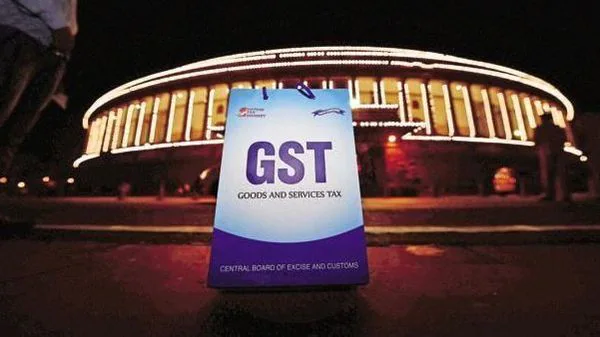India’s Goods and Services Tax (GST) regime is set to witness a significant shake-up with a slew of new proposals aiming to revamp the tax structure. The government’s latest GST reforms could exempt life and health insurance premiums from the tax net while making essential goods like water and bicycles more affordable with a lower 5% tax. However, luxury items like shoes and watches will now attract a hefty 28% GST, stirring debates and raising eyebrows among industry insiders and consumers alike.
This proposed GST rejig reflects the government’s aim to streamline taxation while keeping a close eye on promoting essential services and products. But as with any sweeping reform, it raises the question: Is the government finding the right balance between supporting essential needs and taxing luxuries?

Life and Health Insurance Premiums: A Welcome Exemption
In what is seen as a much-needed relief, the government is proposing to exempt life and health insurance premiums from GST. This move is expected to benefit millions of policyholders across India. Currently, insurance premiums attract an 18% GST rate, which many have criticized as a burden on essential financial planning tools.
Why the exemption matters:
- Increased Affordability: Removing GST on life and health insurance premiums would lower the overall cost of insurance policies, potentially increasing the number of people who purchase insurance coverage. In a country like India, where insurance penetration is still relatively low, this move could incentivize more individuals and families to seek protection.
- Relief Amid Rising Healthcare Costs: The proposed exemption comes at a time when healthcare costs are surging, and health insurance has become more vital than ever. This change will ease the financial burden on middle-class families and encourage people to opt for better health coverage.
5% GST on Water and Bicycles: Encouraging Essential Goods
In a move to make essential goods like water and bicycles more accessible, the government plans to introduce a 5% GST rate on these items. While bottled water already carries a GST, the new reform aims to expand this tax bracket to other forms of water distribution as well.
Why this change matters:
- Boost for Green Transportation: Bicycles, as an eco-friendly mode of transportation, are expected to become more affordable with the 5% GST rate. This is seen as a positive step toward promoting sustainable mobility, especially in rural and semi-urban areas where bicycles are a primary mode of transport.
- Clean Water Access: Imposing a 5% GST on certain types of water aims to streamline the tax structure while maintaining affordability. However, the proposal could raise questions about whether clean drinking water should be taxed at all, given its essential nature.
28% GST on Shoes and Watches: Luxury Taxation?
While the government seeks to make essential goods more accessible, it is also looking to increase the tax burden on luxury items. High-end shoes and watches will now be placed under the 28% GST slab, a significant hike from their current rates. The decision has sparked controversy, especially among manufacturers and consumers of these items.
Why the higher GST on luxury goods matters:
- Impact on the Luxury Market: The proposed 28% GST on shoes and watches, traditionally seen as luxury items, aims to draw a line between essential goods and high-end products. While this could dissuade some consumers from purchasing luxury items, the question remains: Will this move stifle the luxury market or simply drive higher prices for consumers?
- Economic Impact: Luxury goods contribute significantly to India’s economy through domestic sales and exports. A tax hike on these items could affect manufacturers and retailers, particularly as the country recovers from the economic slowdown caused by the pandemic.
Balancing Essentials and Luxuries: Is the Government Getting It Right?
The proposed GST reforms attempt to strike a delicate balance between providing tax relief on essential services like health and life insurance and levying higher taxes on non-essential luxury items. But some argue that the government might be focusing too much on taxing items like shoes and watches while leaving other potentially high-revenue sectors untouched.
- Questions on Taxing Essentials: While the government’s move to exempt health and life insurance premiums has been welcomed, the introduction of a 5% GST on water, even in certain forms, could spark debates about the morality of taxing a basic human need.
- Will the Luxury Tax Backfire?: The proposed 28% GST on shoes and watches could backfire, leading to reduced sales and impacting retailers. With the high inflation rate already affecting consumers’ purchasing power, a higher tax on these goods could dissuade buyers and slow down consumption in the luxury sector.
- Encouraging Green Alternatives: On a positive note, the 5% GST on bicycles aligns with the global push for sustainable living. This could promote the use of eco-friendly transport, particularly in rural areas where bicycles are a lifeline.
The Road Ahead: What Will the Impact Be?
While the GST rejig is still in the proposal stage, its potential impact on consumers, manufacturers, and the overall economy is immense. The government’s decision to exempt life and health insurance premiums from GST and lower rates on essential goods is a step toward promoting affordability. However, the controversial move to impose higher taxes on luxury goods raises questions about whether the government is balancing its tax policies effectively.

